The Caribbean Cowboy
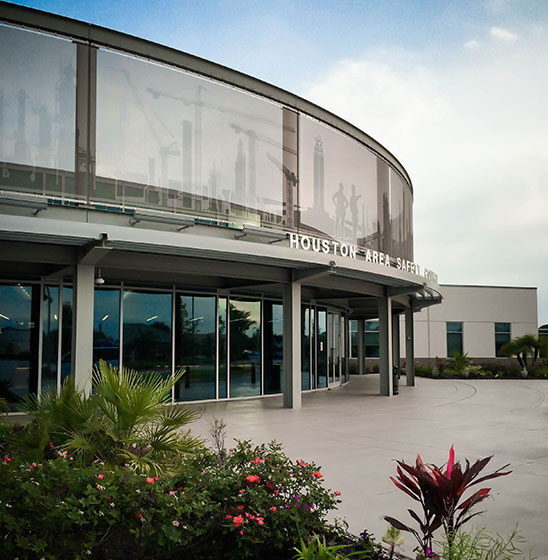
Luis Aguilar and the Health and Safety Council keep the petrochemical industry safe in Houston and beyond.
Luis Aguilar, hailing from Honduras’ Caribbean coast but stationed in Houston for 30-plus years, has always relished his outsider status. As a young man, Aguilar wasn’t aching to come to the United States, but through a curious series of events, he found himself as CEO of HASC—the largest safety council in the US, serving the petrochemical sector in the energy capital of the world.
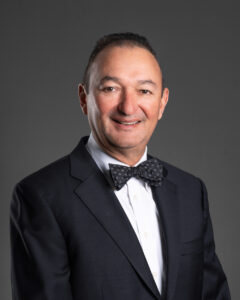
Today, Aguilar retains a distinctively outsider-ish independence, verve, and entrepreneurialism. That mindset is reflected in HASC, founded in 1990 as the Houston Area Safety Council and recently rechristened as the Health and Safety Council. The name change reflects HASC’s ambitions to serve members on a global level. HASC offers training and occupational health services to more than 2,000 people each day through multiple satellite locations in the US and the Caribbean. Its staff numbers more than 200.
It’s an evolution that Aguilar didn’t foresee in the late 1980s, when he was asked to attend a meeting of a committee formed in the wake of a deadly explosion in the Houston Ship Channel—a meeting that would eventually lead to the formation of HASC. Aguilar details his journey from a childhood spent swimming off the Honduran coast to a career as a Texas CEO.
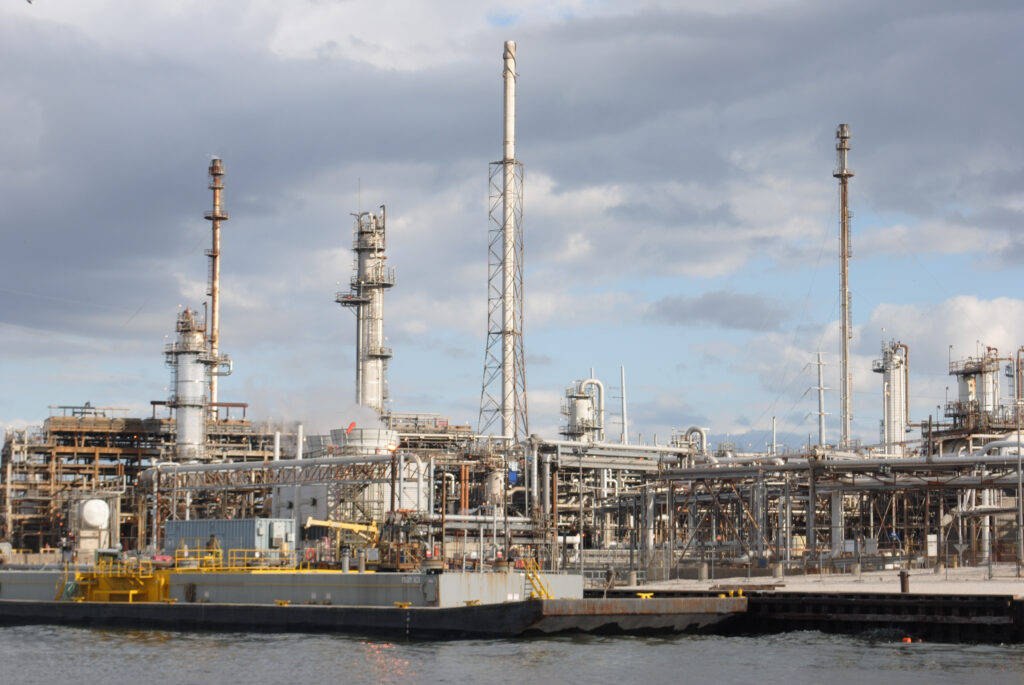
Could you start by telling us about your early life?
I’m from the north side of Honduras. Honduras is one of the poorest countries in the world but also one of the most interesting and fun. I grew up in Roatán, one of the Bay Islands, and La Ceiba, which is a port on the Caribbean coast that was developed by the banana industry, especially Standard Fruit Company and United Fruit Company [now Chiquita Brands International].
You probably know the term banana republic. Well, that describes La Ceiba. I grew up in the camps around United Fruit and Standard Fruit, and I was very Americanized by being around this industry. But I had a lot of fun, swimming with the dolphins and scuba diving in one of the best reefs in the world. I was entrepreneurial too. We used to sell coconut oil on the beach to tourists. We were poor, but I didn’t know because I was having a lot of fun.
My parents were schoolteachers, so we did have education. Very early on, I had a passion for reading and travel. We didn’t have college on the islands so I had to travel to the capital city, Tegucigalpa. It’s a mountain town with the temperature and elevation of Denver.
Latin American colleges during that time—this was 1976—were very socialist. I started to realize there was a lot of support for Che Guevara, Fidel Castro, and so on. I didn’t like it. I ended up winning a scholarship to go to Rome. I was not the brightest light on the chandelier, but probably I tried the most.
Rome was good for me. I went to the University of Sapienza, then came back to Honduras and taught engineering as a professor of thermodynamics and fluid dynamics. Many of my students were older than me, and I looked even younger because I didn’t even grow a mustache then. Parallel to being a professor, I was working in the industry. My first job was in a sugar mill, which is a lot like an oil refinery. The equipment is very similar.
The big difference between being an engineer in Latin American and being an engineer in the United States is that in Latin America you have to build your own labor. There’s no head hunting. You have to get your hands dirty and train your own boilermakers, welders, pipe fitters, millwrights, all the other trades. Here in the US, shamelessly grab talent from other companies and put them on the field. It was a very good school for me.
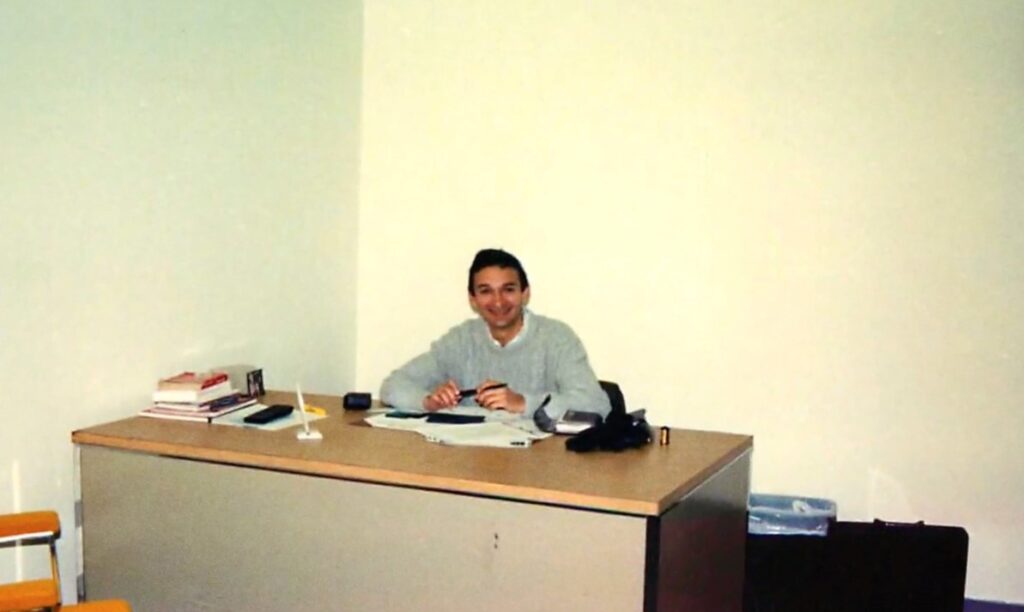
Do you still use that mindset today?
I tell you what, that was a key to success for me and the Health and Safety Council, whose whole mission is workforce development. When I came to Houston, I heard that the labor force was an issue. Over time, it became a mega issue. It was a blessing that that’s exactly what I was doing in Latin America: developing labor, making it safe, and avoiding accidents.
How did you end up in the United States?
I didn’t plan to be here. I came as a subcontractor and engineer on a project to build a hazardous waste incinerator in Laporte. I told my boss I’d go “for a short period of time.” I was also a techie and had my own software company—I was having fun—but I had no interest in being in the United States.
But then, in October of 1989, about a year after I got here, we had a catastrophic disaster in Pasadena: the Phillips 66 explosion. That explosion changed the lives of many people in my generation. It was like an atomic bomb in the Houston Ship Channel. Twenty-three people died and hundreds were injured. The Houston Business Roundtable created a task force to find a solution so this disaster wouldn’t happen again.
Back then, safety and environmental issues were done terribly. There was no centralized database. Everybody was operating on silos. Exxon was working by itself. Shell was working by itself. Everybody was isolated. My contract was about to expire, but I got the opportunity to be on that task force. My boss didn’t want to go to the meeting, so he sent me to fill me in. I was just a kid, 29 or 30 years old, with all these top CEOs in the petrochemical industry, working on resolving this situation.
Less than a year later, we had another catastrophic disaster with the ARCO explosion in Channelview, Texas, which killed 17 people. The commitment to safety became even stronger. Houston had the worst safety record in the world during that time. The mission was to go from the worst to the best. Our task force’s target was zero accidents. People laughed. The usual goal is: “we’re going to reduce accidents by 20 percent.” We said zero accidents.
As an engineer, I asked for the companies’ centralized records. I thought that, being in America, they would have a database, algorithms to see trends, etc. They didn’t have any. I couldn’t believe it. I said, “We need to centralize.”
I would ask things like “How many people work in the Ship Channel?” They would throw out a number that just sounded good: “25,000.” I said, “How do we know?” They didn’t. They’d just repeat it so many times, they’d start believing it. I wanted the data. I thought that’s how we would create better collaboration. That was the beginning of my involvement with what would become HASC.
Soon that little committee got filed as a 501(c)(3), and we started the official organization in a garage office, like many American companies. I was the first employee. I wanted to operate as a consultant, an independent, but because I was an immigrant, I had to be sponsored by a company. We got $80,000 to start, enough to buy a few pieces of equipment and develop the database.
I built the database by myself on dBase III and presented it to the committee. They loved it. We then began building a membership base of companies that would pay a small fee, basically nothing, to access our training and knowledge.
I went around in my Toyota Tacoma knocking on the door of every energy company in Pasadena, Deer Park, Galena Park. My accent was very heavy. Especially here in Texas, we have a lot of cliquey towns, so it was hard as an immigrant. I’m an outsider. I’ve always been a stranger in my own country; I’m half Hebrew and half Mayan. But I operate as an outsider really well. I think it’s an advantage.
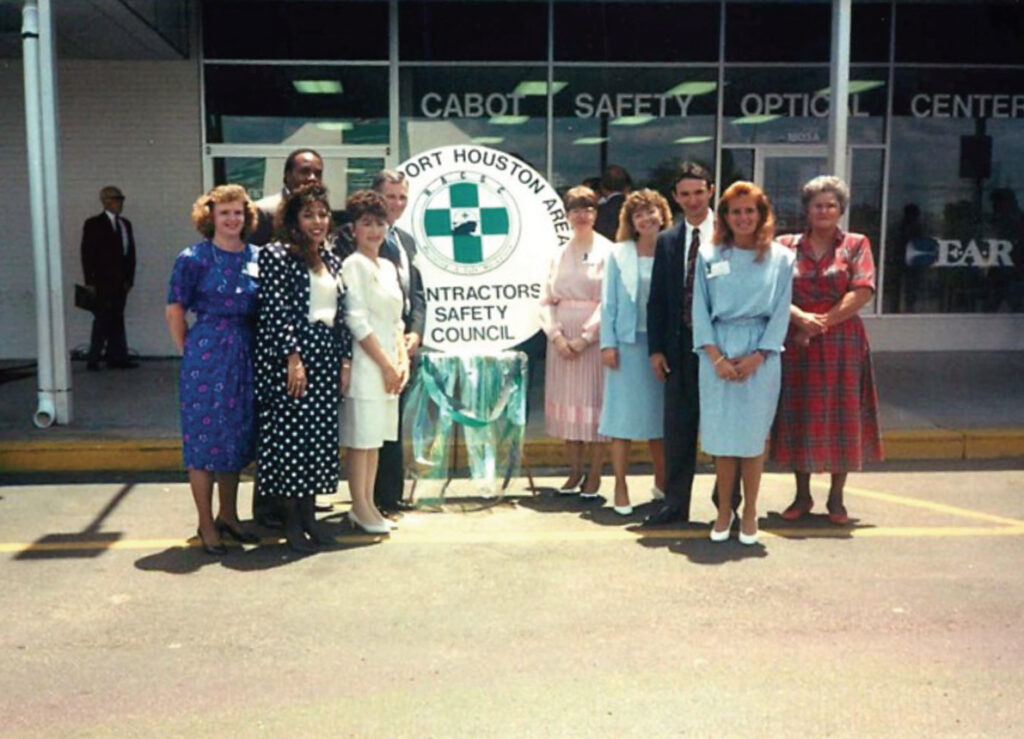
How did you manage HASC’s growth from there?
There were many challenges, starting with the first volunteers. HASC’s governance, our board leadership, are all volunteers, and interestingly they are competitors with each other. We had to teach them to take off the competitor hat and put on the collaboration hat. But because we all agreed on the mission and that “life has no price,” people grew more and more willing to share best practices, the good and the bad.
We had these very big companies represented, and I had to sit down with their leadership as a young engineer, a nobody, and oversee all these safety solutions. Together we created a curriculum around safety and environmental principles, including the essentials for sustaining human life in a refinery.
When you go inside the gates of a refinery, it’s like a war zone. Every step of the way, you can lose your life. From the freeway, you just see the pipes going from one side to another one, but inside it’s a different ball game. We create that culture, the awareness, and also the skills.
The curriculum committee worked hard to develop a curriculum that would keep people safe and that could hold up if there was an incident or litigation. I was not used to litigation before I came to the United States. In Latin America, we get away with a lot of stuff that you cannot here.
These committees were all volunteers, but I had to get them to follow my lead. What you do with a volunteer? Feed them. I would give them tacos and coffee and get them talking about solutions. It had to be fun, not boring. As an outsider, I did really well. They’re the cowboys; I’m the Caribbean guy. Of course now, after 35 years of being here, I’m the Caribbean cowboy.
Who delivered this curriculum once it was developed?
I initially got 72 volunteer instructors.
From where?
Not the local community college but from the field. Our instructors were the people actually building the scaffolds and so on. It was a hands-on approach like what I did in Latin America. We didn’t have academics teach, no PhDs. It was blue-collar guys.
Because we’re not a high school or community college, we don’t have to ask permission to change the curriculum. We’re very nimble. If there’s a new best practice coming on the table, we can change it in a dime. A lot of organizations are structured to a point that they freeze and can’t execute. We execute day in, day out.
At the very beginning, it was just me in leadership at HASC. New organizations need a guru for a few years, and then you transition into a real team. Many people fail by trying to control the organization as it’s growing. I knew I had to stop being the guru at a certain point. Did I like it? No, it’s good to be the guru. But you have to be humble and pull other people to leadership too. You have to get the young bucks, like we say in Texas, to move forward. Now I’m just coaching. That’s my job now.
Today, we’ve made an impressive evolution from the garage office. In September, we’re going to celebrate 32 years in existence. Today we have a big campus and are the largest safety council in the United States. But we preserve that entrepreneurial identity. We know where we came from.
I can tell you now that the Houston area is the safest place in the world to operate in this industry. We went from the worst to the best. We have 2,000 people coming to this facility, day in, day out, to learn new skills and safety practices.
Starting out, you weren’t interested in being in Texas. What are your thoughts on the state now?
I’m still a Caribbean guy, but I like Texas. It’s a great land. There is a lot of opportunities. And it’s a good fit for me because I’m conservative in how I think. I believe in absolute values. Like gravity—if I release a rock from my hand, we don’t have to argue about where it will go. Here, there are a lot of people like that around me.
Houston is a very cosmopolitan city too. I would say that Houston has become the new New York in that regard. I used to visit New York a lot as a kid because we had family there. Of course, in New York I was always a Puerto Rican. In Texas, I’m a Mexican. In Miami, I’m a Cuban!
What is your vision for the next several years of HASC?
My job is to look for and handle coming interruptions, whether it’s from technology or something else. COVID is a good example. I heard the rumblings of the virus in January. We got the team together started looking at what we could do. Everyone was still flying and dancing and having fun—the virus was in China! Then, 30 days later, Italy is upside down.
Fortunately, we had already built decontamination stations and were scanning people to enter. People called us crazy. But I met with the judges in Houston and told them that we were essential. I wanted the permits to operate every day—and this was before any schools or businesses closed.
We invested $480,000 in plexiglass very early, before anyone else. We have over 2,000 computers here and each one is needed for training. We couldn’t have people coming in dressed like astronauts. So we invested in plexiglass. Sixty days later, plexiglass was everywhere—and three, four times more expensive. That $480,000 we spent would’ve been millions.
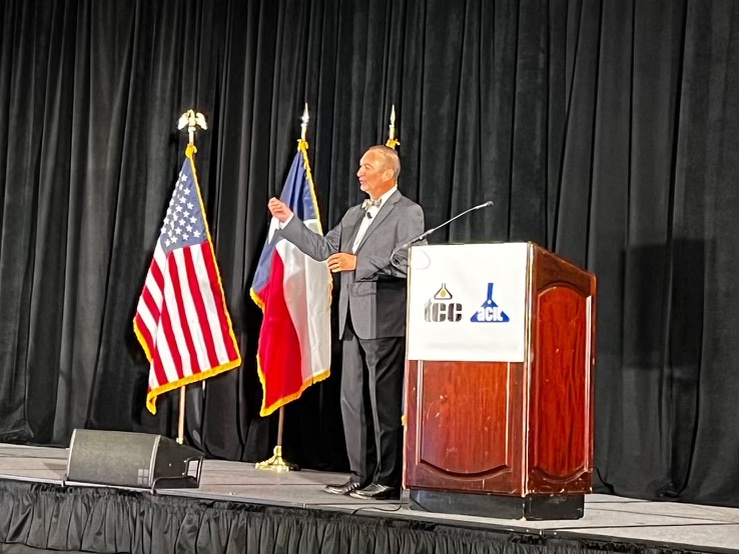
At the same time, we’ll keep working on innovations. We have a strong track record of that. We built our own cloud in 2004, long before cloud technology was built by Apple. Our system is now the largest database for contractors in the world, with over 25 million records, all highly specific about the petrochemical industry.
That innovation continues today as we build a robust system that can reach the whole planet. There are 24 safety councils in the US, but we are the largest, and we have the best technology. Our strategy is to license to regions across the world. That will also grow our database exponentially. There’s no limit to where we can go: Alaska, South America, the Middle East. They need safety solutions too, and we’re already spreading our wings beyond the Ship Channel.
How does a CEO become good at forecasting and seeing future disruptions? Do you read a lot? Do you follow the news?
There’s a CEO bootcamp that I attend in Washington, DC, organized by ASAE [the American Society of Association Executives]. We exchange a lot of best practices there. I’m always tapping into the wisdom of the committees I work with too. When you’re at a table with a lot of white hair or no hair, it’s good to pay attention. You have to be humble and willing to be coached. People in Texas are very humble and willing to teach.
I also get a lot of information from the Wall Street Journal and Bloomberg, not to worry but to see what the market is doing and anticipate the business climate. I’m very selective though. There’s so much information out there, and it can be distracting.
Do you have any observations about the future of the petrochemical industry?
We’re going to have to make a drastic decisions in regard to green energy. Green energy will be good when it eventually comes. But it takes a lot of energy to power the planet in one day, and green energy is a long way off from doing it. Petrochemical is becoming much cleaner, and we have much smarter facilities. There’s a lot of emission control and carbon capture.
The petrochemical industry is here to stay for at least the next hundred years. Everyone I know is in favor of green energy, but we are not in favor for the government picking winners and losers. I don’t think that’s the role of the government.






